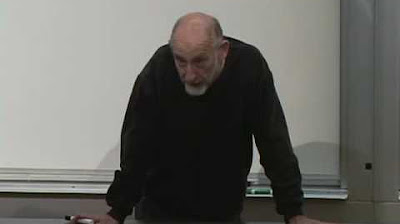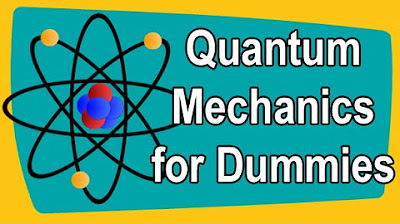Fundamental vs. Composite Particles and the Standard Model - IB Physics
TLDRThis lecture delves into the distinction between fundamental and composite particles within the framework of the Standard Model, which is a comprehensive model of all known particles. Fundamental particles, such as electrons and quarks, cannot be broken down further, unlike composite particles like atoms, protons, and neutrons, which are made up of smaller constituents. The video introduces the audience to various fundamental particles, including quarks, leptons, exchange particles, and the Higgs boson, as well as composite particles like baryons and mesons. It explains the concept of antiparticles and the principle of quark confinement, emphasizing the importance of memorizing key properties and charges for understanding particle physics, especially for students preparing for the IB Physics exam.
Takeaways
- 🌌 The Standard Model is a framework that describes all known fundamental particles and their interactions.
- 🏗️ Composite particles are made up of smaller particles, unlike fundamental or elementary particles which cannot be broken down further.
- 🚀 Historically, atoms were once thought to be fundamental particles, but we now know they are composite, consisting of protons, neutrons, and electrons.
- ⚛️ Electrons are considered fundamental particles as they cannot be split into smaller pieces, whereas protons and neutrons are composite, made of quarks.
- 🔵 Quarks are the building blocks of protons and neutrons and are themselves fundamental particles with no smaller constituents.
- 📊 The lecture introduces a visual system for organizing information about particles, using boxes and color coding to differentiate between types.
- 🔍 Antiparticles are counterparts to fundamental particles with the same mass but opposite charges and other quantum properties.
- 🧬 Quarks are subject to the principle of quark confinement, meaning they cannot exist as single particles but only in groups or bound states.
- 🔬 Exchange particles, or force carriers, are virtual particles that mediate the fundamental forces in nature, including gravity, electromagnetism, and the nuclear forces.
- 🧲 Hadrons are composite particles composed of quarks, and include baryons (three quarks) and mesons (one quark and one antiquark).
- 🔎 The Higgs boson, discovered relatively recently, is unique in that it is its own antiparticle and is associated with the Higgs field, which gives particles mass.
Q & A
What is the difference between fundamental and composite particles?
-Fundamental particles, also known as elementary particles, are not made up of smaller particles and cannot be broken down further. Composite particles, on the other hand, are made up of smaller particles.
What was once believed to be a fundamental particle but later discovered to be composite?
-Atoms were once believed to be fundamental particles, but it was later discovered that they are composite particles composed of protons, neutrons, and electrons.
What are the smaller particles that make up protons and neutrons?
-Protons and neutrons are made up of smaller particles called quarks.
What are quarks and why are they considered fundamental particles?
-Quarks are elementary particles that cannot be broken down into smaller particles. They are fundamental because they are not composed of other smaller particles.
What is the standard model and what does it encompass?
-The standard model is a theoretical framework that describes all known elementary particles and their interactions with one another. It includes fundamental particles like quarks and leptons, as well as composite particles like hadrons.
How are particles displayed in the visual system presented in the script?
-In the visual system, particles are displayed in boxes with their names written above in the same color as the box. Facts about the particles are displayed inside the box, and if there are subcategories or types of particles, they are shown in smaller boxes within the larger box.
What are the four main types of fundamental particles discussed in the script?
-The four main types of fundamental particles discussed are quarks, leptons, exchange particles, and the Higgs boson.
What is an antiparticle and how is it represented?
-An antiparticle is a particle with the same mass as the original particle but with an opposite electrical charge, strangeness, baryon number, and lepton number. It is represented by drawing the letter symbol for the original particle with a horizontal line above it.
What is the principle of quark confinement and how does it relate to quarks and antiquarks?
-The principle of quark confinement states that quarks and antiquarks never exist on their own; they only exist in pairs or in groups of three. This principle is related to the strong nuclear force that keeps quarks bound together.
What are hadrons and how are they related to quarks?
-Hadrons are composite particles made of quarks. There are two types of hadrons: baryons, which are made up of three quarks, and mesons, which are made of a quark and an antiquark.
What is the significance of the Higgs boson in the standard model?
-The Higgs boson is significant because it was discovered relatively recently and it is its own antiparticle. It is also associated with the Higgs field, which is believed to give particles mass.
How can the properties of composite particles like baryons and mesons be determined?
-The properties of composite particles like baryons and mesons can be determined by adding the properties of the constituent quarks and antiquarks. For example, the charge of a baryon is the sum of the charges of its constituent quarks.
What is the role of exchange particles in the standard model?
-Exchange particles, also known as force carrier particles, mediate or transmit the four fundamental forces between interacting particles. Examples include the photon for the electromagnetic force, the gluon for the strong nuclear force, and the W and Z bosons for the weak nuclear force.
How can one determine if a particle is a baryon or a lepton?
-A baryon is a composite particle made of three quarks and experiences both the weak and strong nuclear forces. A lepton, on the other hand, is a fundamental particle that does not experience the strong nuclear force. Examples of leptons include electrons, muons, and neutrinos.
What is the elementary charge and how does it relate to the charge of leptons?
-The elementary charge is the electric charge carried by a proton, which is approximately +1.60 x 10^-19 coulombs. The charge of leptons is measured in terms of the elementary charge, with electrons having a charge of -1e and positrons having a charge of +1e.
Outlines
🔬 Fundamental and Composite Particles in Particle Physics
The script discusses the distinction between fundamental and composite particles, as well as the Standard Model of particle physics. Fundamental particles are indivisible, such as electrons and quarks, while composite particles are made up of smaller particles, like atoms composed of protons, neutrons, and electrons. The video aims to introduce viewers to all fundamental particles, using a visual system of boxes to represent particles and their properties. The script also explains antiparticles, which are counterparts to fundamental particles with opposite properties, and provides a brief overview of the Higgs boson, quarks, leptons, and exchange particles.
🚀 Deep Dive into Quarks, Leptons, and Exchange Particles
This section of the script provides a detailed explanation of quarks, which are the most massive fundamental particles and the building blocks of hadrons like protons and neutrons. It covers the principle of quark confinement, which states that quarks never exist alone but in pairs or triplets. The script also delves into leptons, which are less massive and do not experience the strong nuclear force. Leptons include electrons, muons, tau particles, and their corresponding neutrinos. Exchange particles, or force carriers, are virtual particles that mediate the fundamental forces, and the script briefly describes the graviton, photon, gluon, and bosons responsible for the weak nuclear force. Lastly, the Higgs boson is mentioned as a particle that was discovered recently and is its own antiparticle.
🧠 Understanding Composite Particles and the Standard Model
The script explains composite particles, specifically hadrons, which are made up of quarks and experience both the weak and strong nuclear forces. Hadrons are divided into baryons, consisting of three quarks, and mesons, made of a quark-antiquark pair. The properties of hadrons, such as charge and baryon number, are determined by the quarks that compose them. The video script also provides examples of how to calculate these properties using the given information about quarks. The Standard Model is introduced as the best description we have of the universe, encompassing all fundamental particles and their interactions. The script concludes with a series of problems based on actual IB tests to demonstrate the application of the learned concepts in particle physics.
Mindmap
Keywords
💡Fundamental Particles
💡Composite Particles
💡Quarks
💡Leptons
💡Exchange Particles
💡Higgs Boson
💡Antiparticles
💡Baryons
💡Mesons
💡Standard Model
Highlights
Fundamental particles are not made of smaller particles, while composite particles are composed of smaller particles.
Atoms were once thought to be fundamental but are now known to be composite, made of protons, neutrons, and electrons.
Electrons are fundamental particles and cannot be broken down further.
Protons and neutrons are composite particles made up of smaller particles called quarks.
Quarks are fundamental particles and cannot be broken down into smaller particles.
The standard model is a model of all particles that fundamentally exist.
The lecture introduces a visual system to display information about particles in boxes.
There are four main types of fundamental particles: quarks, leptons, exchange particles, and the Higgs boson.
Composite particles called hadrons are grouped into baryons and mesons.
Every fundamental particle has an antiparticle with the same mass but opposite properties.
Quarks are the most massive fundamental particles and make up hadrons.
Leptons are less massive than quarks and do not experience the strong nuclear force.
Exchange particles are virtual particles that mediate the four fundamental forces.
The Higgs boson was discovered recently and is its own antiparticle.
Hadrons are composite particles made of quarks and experience both weak and strong nuclear forces.
Baryons are made up of three quarks and have a baryon number of one.
Mesons are made of a quark and an antiquark and always contain both.
The standard model unifies the understanding of all particles in the universe.
The lecture provides a chart and examples to understand the properties of particles.
Problems from actual IB tests are used to demonstrate the application of the standard model.
Transcripts
Browse More Related Video
5.0 / 5 (0 votes)
Thanks for rating:





